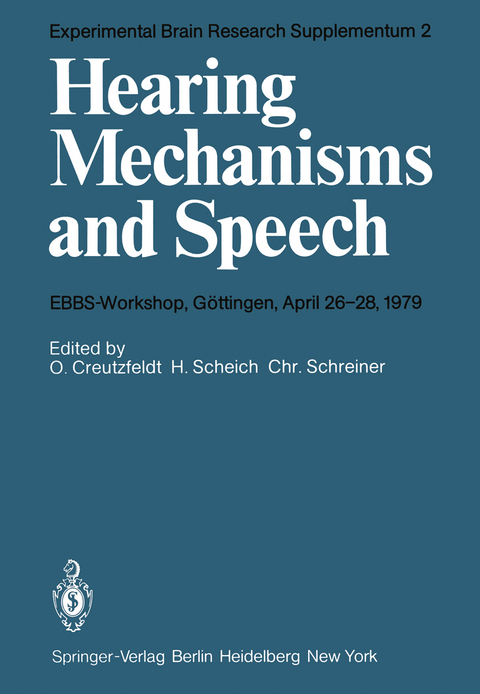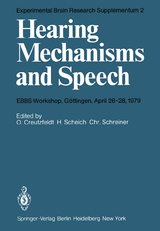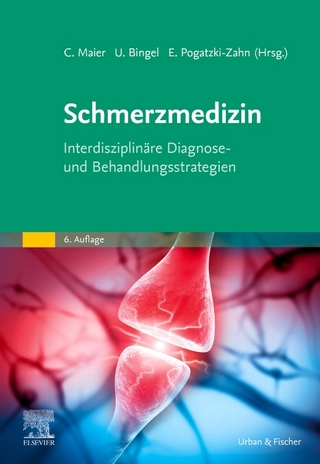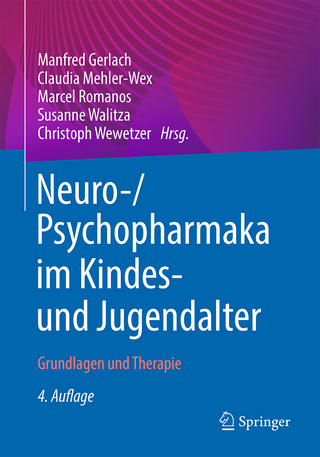Hearing Mechanisms and Speech
Springer Berlin (Verlag)
978-3-540-09655-9 (ISBN)
I) Functional and structural conditions for transmission of auditory signals in the nervous system..- Basic mechanisms of auditory processing in the cochlea.- On the peripheral coding of the level of individual frequency components of complex sounds at high sound levels.- Universal mechanical response curves for the cochlea.- The human cochlea nuclei.- Coding of complex sounds in the auditory nervous system.- Embryological evolution and typology of cells of the inferior colliculus.- Functional and topographic organization of the auditory cortex.- II) The representation of complex natural sounds in the auditory system..- Neural image of sound in the grassfrog.- Spectro-temporal analysis of auditory neurons in the grassfrog.- Tonotopy and analysis of wide-band calls in field L of the guinea fowl.- Selective responses of neurons to vowel sounds in the auditory neostriatum of the mynah bird.- The increase of response selectivity within the avian auditory pathway.- Encoding of complex sounds by thalamic and cortical neurons.- Time segmentation in central analysis of complex signals.- Temporal suppression and speech processing.- Feature detection by single units in squirrel monkey auditory cortex.- Processing of self-produced vocalizations by single neurons in the auditory cortex of the squirrel monkey (Saimiri Sciureus).- Encoding processes of speech sounds in the auditory system.- Verb and noun meaning of homophone word activate different cortical generators: a topographical study of evoked potential fields.- III) Brain mechanisms of speech perception and production..- Anatomical and functional cerebral organization of phonation in animals.- Basal ganglia participation in aphasia.- Participation of mesial cortex in speech: evidence from cerebral potentials preceding speechproduction in man.- Electrical stimulation mapping of language cortex.- Human language cortex: identification of common sites for sequencing motor activity and speech discrimination.- Studies on language comprehension in hemispherectomy, split brain and asphasic patients. A possible contribution to the knowledge of the physiological mechanisms of speech comprehension.- Timing in speech production: aspects of (German) hesitation vowels.- Inborn vocalizations of the human baby and communicative value for the mother.- IV) Psychoacoustic elements in language..- What acoustic stimulation can teach us about physiological mechanisms underlying speech perception.- An outline of pitch analysis in speech: a hearing theory approach.- Pitch determination of speech signals - a survey.- Virtual pitch and our own voice.- On the perception of spectral information in speech.- Perceptual difference limens in pair-comparison of complex (speech-related) signals.- V) Linguistic elements in speech perception..- Aspects of categorical processing of speech sounds in man: on the determinants of phonetic category boundaries.- Selective adaptation of acoustic and phonetic feature sensitive detectors.- Speech sounds in realtion to speech processing.- Perceptual grouping of speech components.- Aspects of the temporal relationship between speech- and word-recognition processes.- The acquisiton of grammar.- VI) Receptive defects of linguistic elements in aphasia..- Auditory agnosia after lesions of the superior temporal gyrus in monkey and man.- Selective impairment of perception of articulatory place in a case of cortical auditory disorder.- Phonemic auditory discrimination and articulatory defects in aphasia.- Comprehension of natural sounds in aphasia.- Lexical and syntactic factors in languagecomprehension of aphasic patients.- Interaural integration in the perception of complete and truncated words by brain damaged and control subjects.- Auditory analogue of deep dyslexia.- The influence of prosodic features in language comprehension in aphasic patients.
| Erscheint lt. Verlag | 1.10.1979 |
|---|---|
| Reihe/Serie | Experimental Brain Research Series |
| Zusatzinfo | XXIV, 414 p. 3 illus. |
| Verlagsort | Berlin |
| Sprache | englisch |
| Maße | 170 x 244 mm |
| Gewicht | 753 g |
| Themenwelt | Medizin / Pharmazie ► Allgemeines / Lexika |
| Medizin / Pharmazie ► Medizinische Fachgebiete ► Neurologie | |
| Schlagworte | Aphasie • Artikulation • Hören • Hörzentrum • Sprachzentrum |
| ISBN-10 | 3-540-09655-8 / 3540096558 |
| ISBN-13 | 978-3-540-09655-9 / 9783540096559 |
| Zustand | Neuware |
| Haben Sie eine Frage zum Produkt? |
aus dem Bereich




